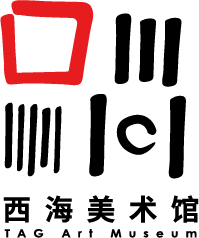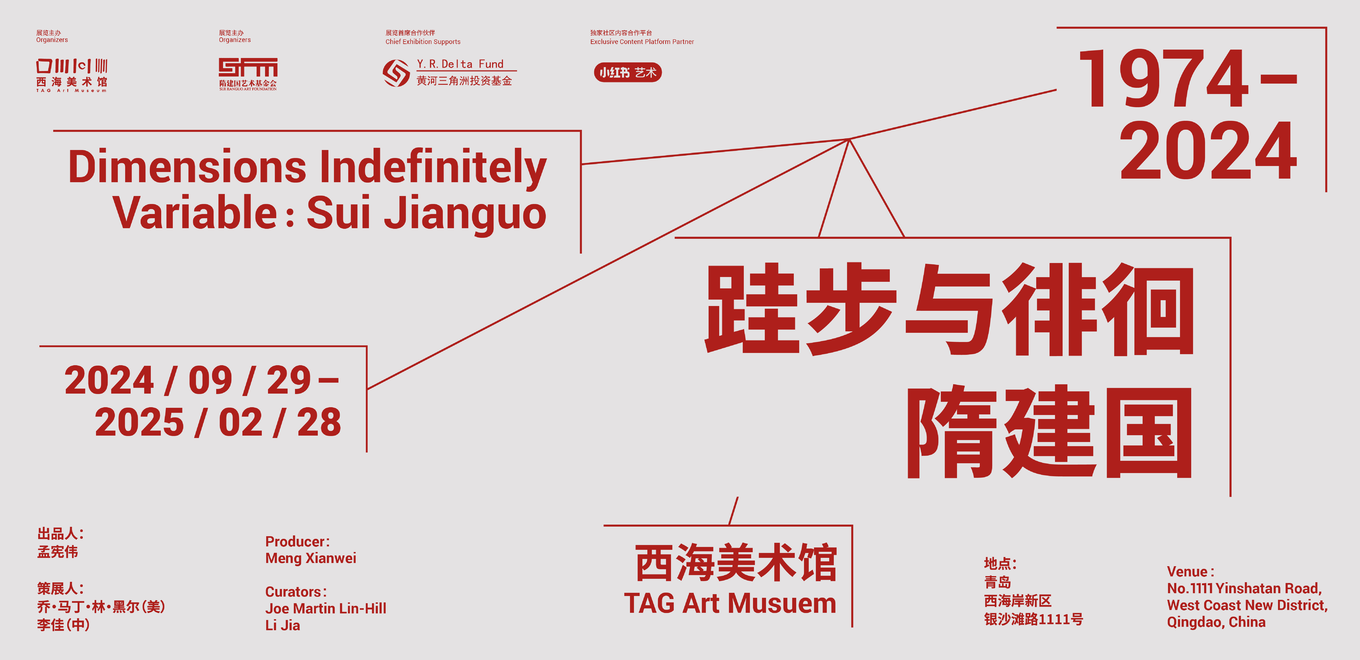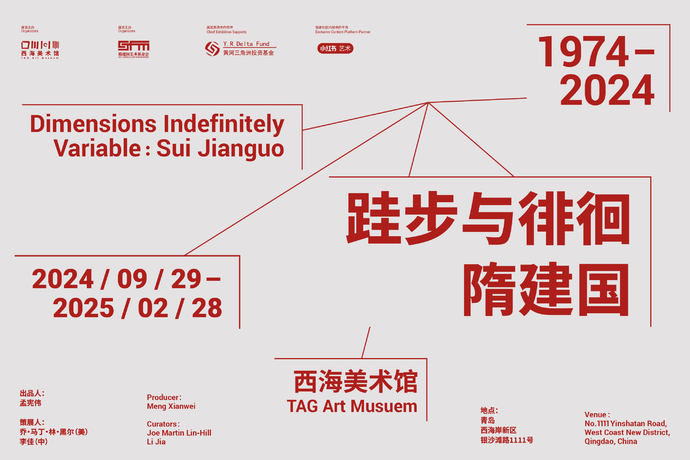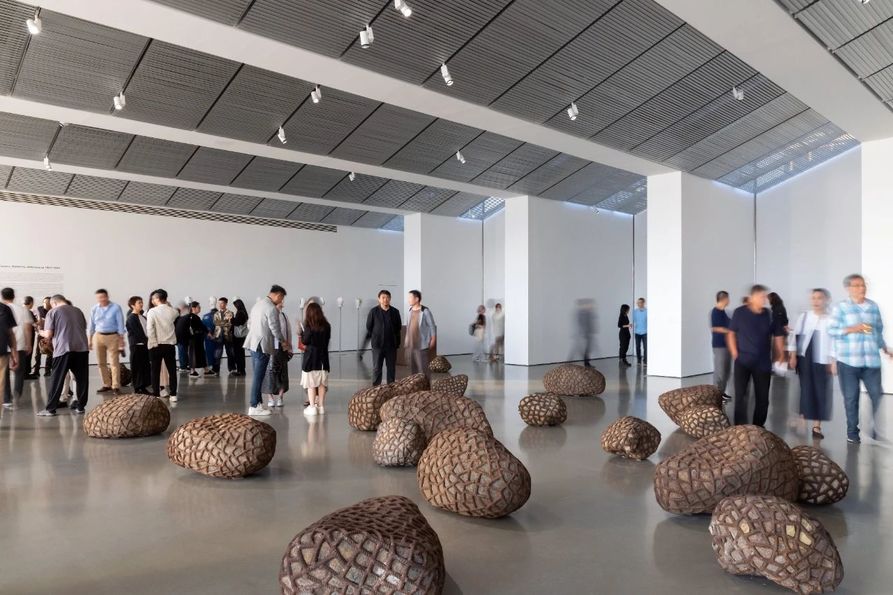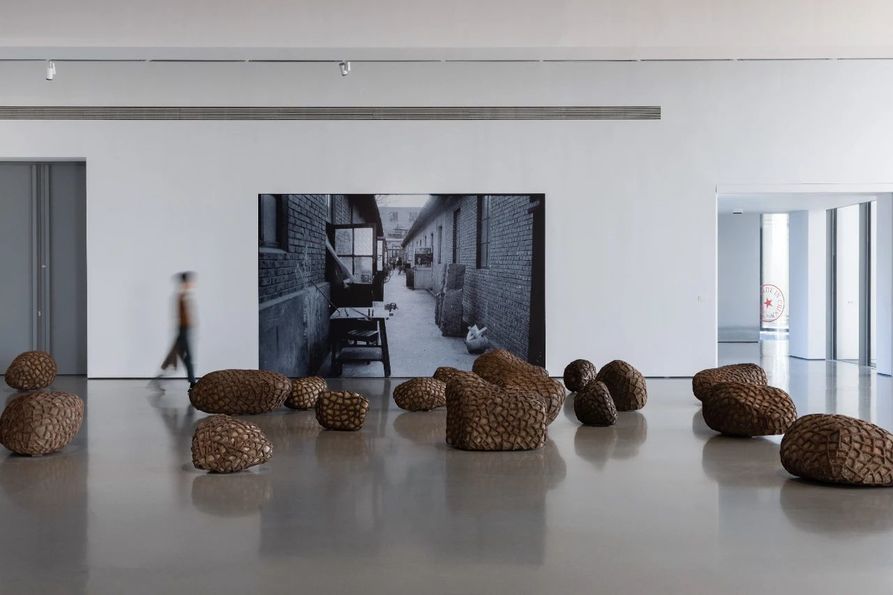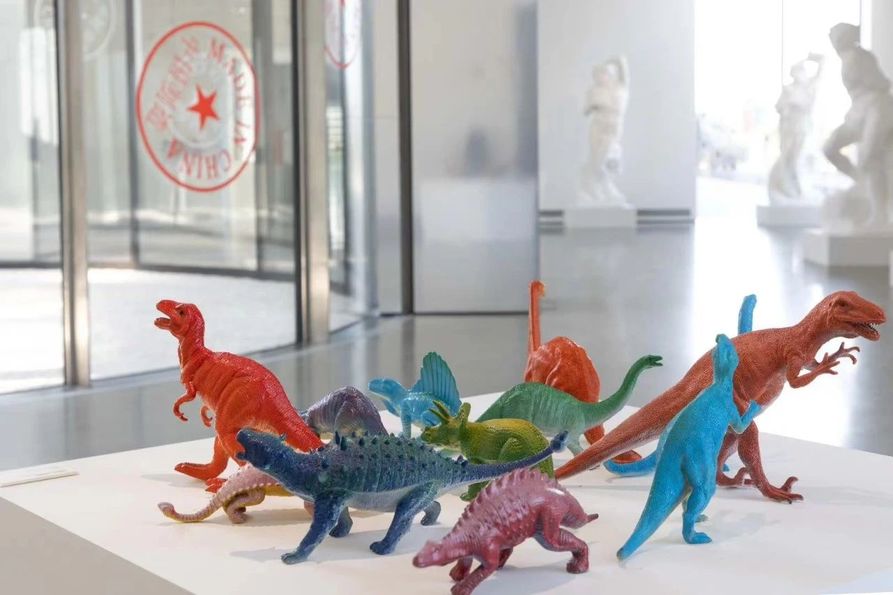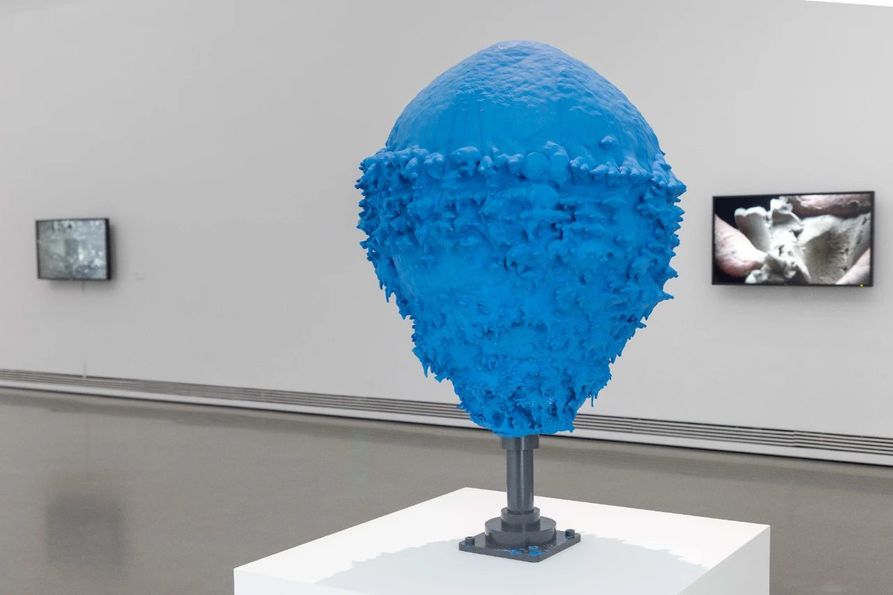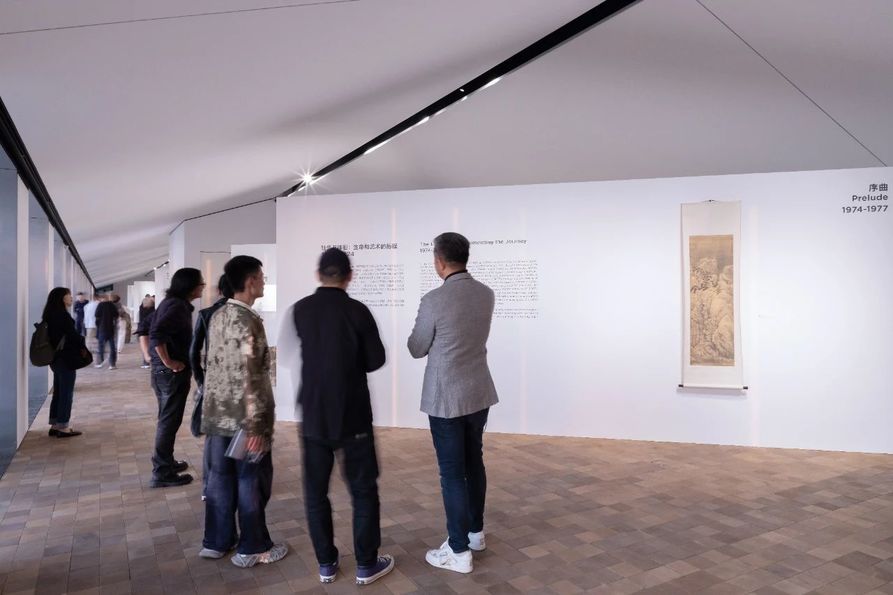The Opening of ’Dimensions Indefinitely Variable: Suijianguo 1974-2024‘ at TAG!
On 28th September, the 50-year retrospective exhibition of renowned sculptor Sui Jianguo, ‘Dimensions Indefinitely Variable: Suijianguo 1974-2024’, was opened at the TAG Art Museum!
TAG Art Museum, which focuses on contemporary art, is rooted in the local cultural environment of Qingdao and has paid attention to the local context since its opening. This exhibition is the first of its kind to focus on Qingdao-based artists, and it is the first time that the museum's entire hall has been used for a solo exhibition in honour of the artist and the city.

“跬步与徘徊:隋建国 1974-2024”展览现场
As a retrospective of Sui Jianguo's fifty years of artistic career, this exhibition, in addition to sorting out and presenting the continuity and transitions of the artist's creations, the evolution and mutation of his artistic threads, and the sharpening and refining of his methodology and ideas, also attempts to restore the scene of the occurrence of art and thought through the collection, collation, and rearranging of a wealth of documents in the form of manuscripts, journals, sketches, sculptural sketches, mind maps, research handwritten notes, photographs, and physical objects, etc., which were collected from 1974, and understand these overlapping and diverging, circuitous and direct routes and their significance for today and the future.

“跬步与徘徊:隋建国 1974-2024”,1号展厅“时间咒语/无常”展览现场
In Hall 1, two large-scale installations stand near the entrance and exit of the exhibition, one as a prelude and the other as an epilogue, revealing the flooding power of time in an echoing manner. This scene is also a metaphor for the artist's mission: to dialogue with time in a perishable body, and to inquire about eternity in the transient.
Most of Sui Jianguo's early works are dark in tone, coarse in texture, and massive in size, giving them a sense of heaviness, as if the artist was attempting to respond to the heaviness of history in this way, and to infuse his own inner state into the form of sculpture, achieving a unique and authentic artistic identity.
In Earthly Force (1992-94), the interlocking and dense iron nets firmly bind the stones, which most completely expresses the inner struggle of Sui Jianguo during this period, where one witnesses the imprisoned passion, the energy of life displayed in struggle and confrontation, as well as the reckless power of nature.

“跬步与徘徊:隋建国 1974-2024”,3号展厅“中国制造 1997–2005”展览现场
All the works in Hall 3 are, like Sui Jianguo himself, ‘Made in China’. It begins with sculptures of dinosaurs of various sizes, colours and types - the latter taken from cheap plastic toys exported from China all over the world, with the words ‘Made in China’ engraved on their bellies.
They reflect not only the artist's critical thinking about China's role as the world's factory, but also his internal reflection on the role of contemporary creators in a multicultural context. The last work in the series was created in 2008 in the outdoor space at the exit of the TAG Art Museum,a red container with the words ‘Made in China’ cut out, echoing the sea in the distance.
The works in Hall 4 demonstrate the relationship between sculpture and time through time-based media such as video.
The multi-screen installation in the centre of the hall, Speeding Up (2006), is the centrepiece of this phase. The Great Speed Up explores multiple temporalities: it presents the actual speed at which the train is running and is a metaphor for China's rapid development. The documentary approach of the train appearing sequentially from one screen to the next, as well as the encircling field of the installation, evokes a direct sense of the present to the viewer.

“跬步与徘徊:隋建国 1974-2024”,悬厅“具身之力 - 2008年至今”展览现场
Sui Jianguo initiated a new phase of his work in 2008, in a sequence entitled Blind Portrait, in which he kneaded small clay balls blindfolded for a year. The aim of this experiment was to free himself as much as possible from the sculptor's technical skills, hand memory and modelling-oriented creative habits, and to find a new way to explore the original connection between human beings and the natural world (the clay), with the help of chance and improvisation.

“跬步与徘徊:隋建国 1974-2024”,悬厅“具身之力 - 2008年至今”展览现场
The Long Table illustrates the evolution of the artist's thinking and practice over the past sixteen years, presenting 1,849 prototypes of clay clusters and other materials in chronological order.
Above hall 5, a twelve-metre-high cubic support structure is suspended, containing a collection of fifty cool grey sculptures that together form Cloud Mountain (2024). These sculptural monoliths, made of photosensitive resin and densely covered with the artist's palm prints, are light and clustered from the tiny prototypes on The Long Table below, which have been precisely scanned and enlarged for 3D printing. These heavenly physical entities are all derived from data uploaded to the cloud, the ‘cloud’ of an increasingly digitalised world.

“跬步与徘徊:隋建国 1974-2024”,悬厅“具身之力 - 2008年至今”展览现场
This cloud, which transforms the idea of emptiness into a visible form, and the reality of matter into the illusion of data, echoes the spirit of the landscape that Sui Jianguo aspired to when he first embarked on his artistic journey fifty years ago. On the first floor of the hall, an ink painting by Shi Tao (1642-1707), copied by the artist 50 years ago, sits next to Cloud Mountain. The inscription on the painting is from a poem by Tao Yuanming (365-427), which seems to be projected into this moment beyond time: ‘Looking at the white clouds from afar, how deep is the memory of the past.’
For the first time, most of Sui Jianguo's documents related to his artistic creation and thinking since 1974 are brought together in the form of manuscripts, diaries, sketches, sculptural sketches, mind maps, research notes, photographs and objects.
Starting from the study of ink painting and classical painting theory(1974-79) in Qingdao at the age of 18, the artist has gone through the exploration of modernism in Shan Yi and the academy of art (1980-89), the phase of material conceptualism after graduation from the academy (1989-1996), the re-exploration of realism and the study of visual culture represented by the Mantle series (1997-2005), and the ‘time’ as the basis of the work from 2006 onwards. Time’ as a clue, process experiments carried out through large-scale installations and projects, and since 2008, the “Blind Portrait” series has opened up a discourse on the metaphysics of the body and the existential visual void.

“跬步与徘徊:隋建国 1974-2024”,7号展厅“壶与镜 2024”展览现场
The spatial design of the hall draws on the principles of traditional Chinese gardens, where windows open onto the waterfront, inviting the viewer to take in both the works around them and the view beyond. This unique exhibition space combines the inside and the outside, the closed and the open, and the close and the distant, echoing the new series of works titled ‘Pot and Mirror’.
Focusing on the relationship between sculpture and the world, between the real and the ‘void’, ‘Pot and Mirror’ is a collection of the artist's realisations and explorations of sculpture over the past ten years. The works presented here form the conclusion of this retrospective, which offers a glimpse into Sui Jianguo's recent creative vision and the role of artistic and cultural traditions in it.

“跬步与徘徊:隋建国 1974-2024”,8号展厅“每个人都是自己生命形式的创造者”现场
The last hall, which contains no works by the artist, is a stage open to every viewer, where everyone is welcome to participate, to experience, express and create together. Visitors will be able to create their own small works in plaster and clay and join in the creation of new works by artist Sui Jianguo.
This is a place where traces of life from different individuals will be gathered, which together bear witness to each person's uniqueness and are a symbol of our interdependence and connectedness.

艺术家隋建国在展览现场
For curator Joe Martin Lin-Hill, ‘Just as endless repetition can transcend time. Those infinite variations and extreme richness in Sui's work transcend the individuality and specificity of his own palm prints and fingerprints. The sculptural archetypes and enlargements he creates point not only to that ‘void’ that is the source of sculpture, but are symbols of the creative potential inherent in every human being and indicative of our common humanity.’

“跬步与徘徊:隋建国 1974-2024”展览现场
According to curator Li Jia, ‘TAG Art Museum strives to present a complete and comprehensive picture of Sui Jianguo's artistic history and ideological trajectory over the past fifty years since 1974, as well as the artist's youthful experience of studying and researching in his hometown of Qingdao, and the ideological foundation and spiritual underpinnings that were formed as a result of that experience that have lasted and continued throughout his creative career. Through a specific and representative case of Chinese contemporary art, we hope to reminisce the interdependence between ‘local’ and ‘global’, ‘art’ and ‘homeland’. It will also attract more eyes from all over the world to Qingdao, the city of culture.’
The exhibition will run until 28 February 2025, and more information about the exhibition will be released on the official platform of TAG Art Museum.

